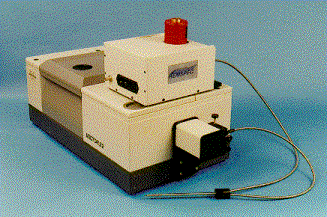Introduction
Definition of Life
Motivation
Preliminary
Steps
Present Life
Past Life
Geological Survey
Sample Collection
Spectroscopic Analysis
Organic Analysis
Biology Experiments
Thin Section
Isotope Analysis
Experimental Design
Infrared Spectrometry
IR Spectroscopy is another important tool for organic chemical analysis and structural identification. An IR spectrum is produced by absorption of energy (4000-400 cm-1) due to vibrations of polar covalent bonds. The absorption of radiation in this region results in the excitation of vibrational, rotational, and translation modes of the molecule. The resultant spectrum and data is used to identify the functional groups in an organic compound such as aromatics, alcohols, acids, etc. The high sensitivity of the instrument makes it an excellent tool for intermediate steps in the experimentation for the search for life on Mars.
- Analytical Information from IR: Structural identification - The IR spectrum of the unknown compound can be compared to tables of functional groups to determine structure.
- Sample Requirements for IR: Liquid or immersed solid. Vapor is also a possibility.
- Supplemental Information: Typical Analysis time - <1 hour the analysis and interpretation of a sample containing relatively few compounds. More complex samples will require additional time for interpretation.
A sample IR instrument (http://www.remspec.com/):

Functionality
IR Spectrometry is a versatile instrument, so it is feasible to have several machines on Mars – one in the permanent habitat and, if possible, on the LMRs.